Trip Report: Suriname
Visited in November 2023
This article is part of a three-chapter series on my trip to the Guianas. This is the second chapter and for a better understanding it is worth reading the Guyana trip report first.
Suriname also thought it was a good idea to build its international airport around 60 kilometers from the capital Paramaribo. Just like in Guyana, the cab to the city center cost me 45 dollars. So three airport transfers within two and a half days cost a hefty 135 USD. I’m telling you, the Guianas for solo travelers are expensive…
Suriname was the second of the Guianas, my 161st country and my second last in South America. The country is the only one in South America with Dutch as an official language, as it used to be a Dutch colony. That’s why Suriname is often referred to as Dutch Guiana. Furthermore, Suriname is the smallest country in South America in terms of both area and population.
Funnily enough, I had never heard of Suriname until I started counting countries. I already knew many countries as a young child because I collected Panini football/soccer cards and studied the results of the World Cup qualifiers in the Panini book. However, as Suriname doesn’t have a national football team, I never came into contact with this country in this context.
Edit: a reader pointed out to me that Suriname does indeed have a national football team. However, they are part of CONCACAF (Confederation of North, Central America and Caribbean Association Football) and not CONMEBOL (South America).
And yet it was precisely football which is why I should have heard of Suriname. Gullit, Rijkaard, Seedorf, Kluivert, Davids and many other world-class Dutch players have Surinamese roots. As a child, I always thought that these players were Africans, as is the case with players in the English, French or Belgian national teams.
Although I had two nights in Suriname, just like in Guyana and later in French Guiana, my stay in this country was the shortest. I basically had two nights and one full day and I wanted to make the most of it. My hotel for two nights was right in the city center of Paramaribo. It was also relatively cheap at around €68 per night. The Palacio Hotel was great value for money and the breakfast wasn’t bad either. I would stay there again anytime.
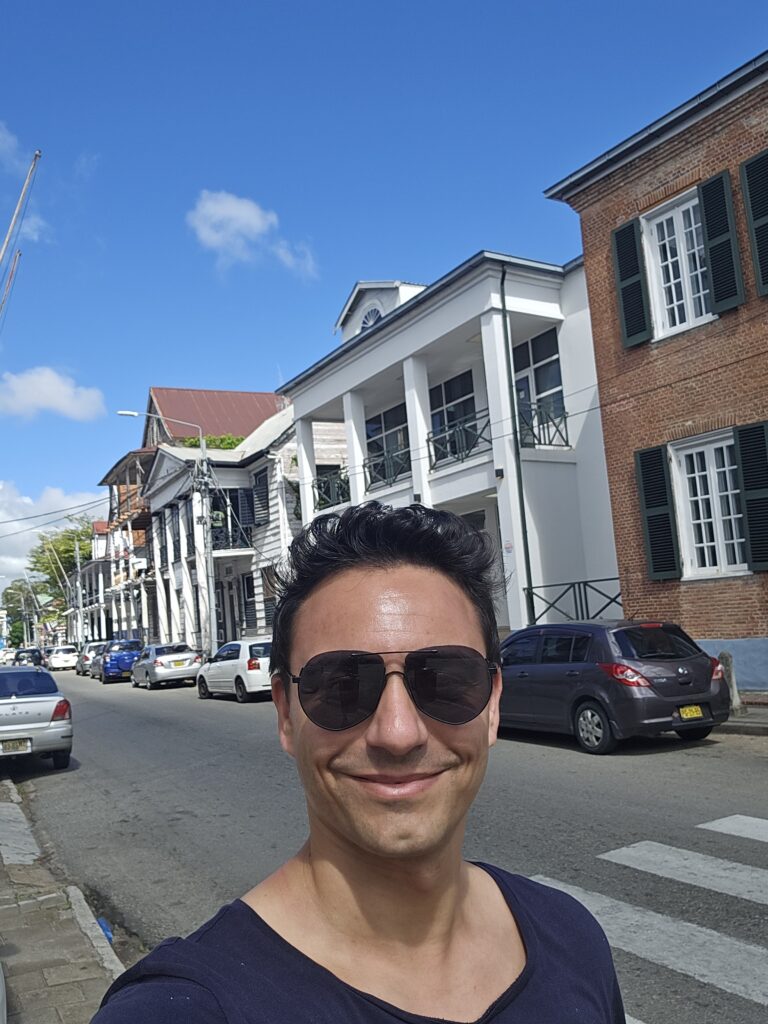
Just like in Guyana, the weather in Suriname was brutal in November. It was about 30°C and the humidity was over 80%. Half an hour outside and you were completely drenched in sweat. You didn’t really need to do your hair, it was ruined after a short time anyway. I would describe myself as relatively heat-resistant, but I found the climate in the Guianas to be one of the most unpleasant I’ve ever experienced.
For this reason, I decided to explore the city in the early hours of the morning. I was already on the street at 7am and visited the center, which is a UNESCO World Heritage Site. By the way, it was already very hot even at this early hour of the morning.
Unlike Georgetown, Paramaribo is a very relaxed and picturesque little town. The Dutch colonial architecture is pretty and the city with its green spaces is also quite beautiful. It was easy to say that I liked this city much more than the capital city of Guyana.

It’s great that all the sights are relatively close to each other, so you can basically see everything in two hours. Only Fort Nieuw Amsterdam is an attraction that is about 30 minutes away from the city center. I had this place on my list, but the receptionist at my hotel told me that the fort is only open on certain days.
Instead, I went to Fort Zeelandia in the city center. Worth seeing? Well, not necessarily. The museum is only in Dutch. As a German speaker, you can understand a lot of the signs. But apart from that, I’ve seen much more interesting museums. However, the view of the Suriname River and the Jules Wijdenbosch Bridge, Suriname’s most famous bridge, which connects the capital with the town of Meerzorg and is now a landmark of the country, is worthwhile.
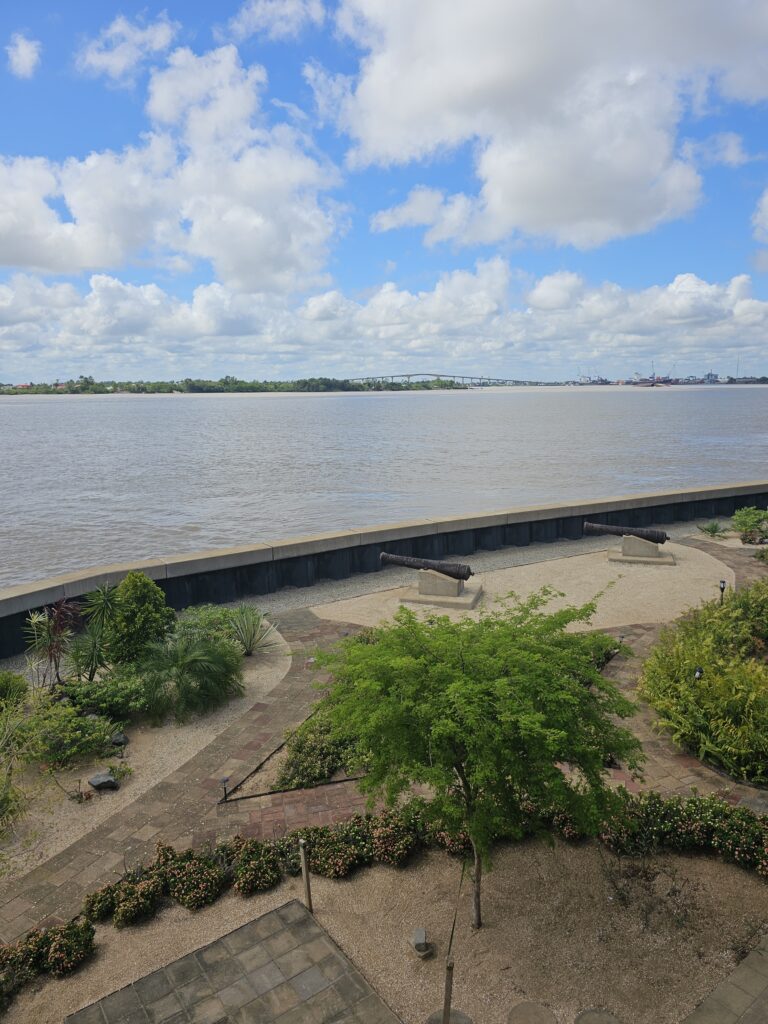
Compared to Georgetown, I found the atmosphere in Paramaribo much more relaxed. The people made a very nice impression and you didn’t have to worry about being robbed in broad daylight in the middle of the city.
By the way, although Suriname was a Dutch colony, many people here speak English. I was later told that most Surinamese speak three languages: Dutch, Sranan Tongo, an English-based Creole, and proper English.
That was certainly one of the reasons why Suriname, like Guyana, didn’t really feel like South America. However, while I described Guyana as a mixture of the Caribbean and Africa, it was more difficult to categorize Suriname. It seemed to be a wild mixture of the Caribbean, Europe, Africa, Indonesia and India. A few more words on this later.
By the way, speaking of a mix, I have to point out two sights in Paramaribo. A synagogue and a mosque standing shoulder to shoulder are about a ten-minute walk from the historic center. Especially in these times, it is nice to see two houses of these two religions standing next to each other and coexisting peacefully.
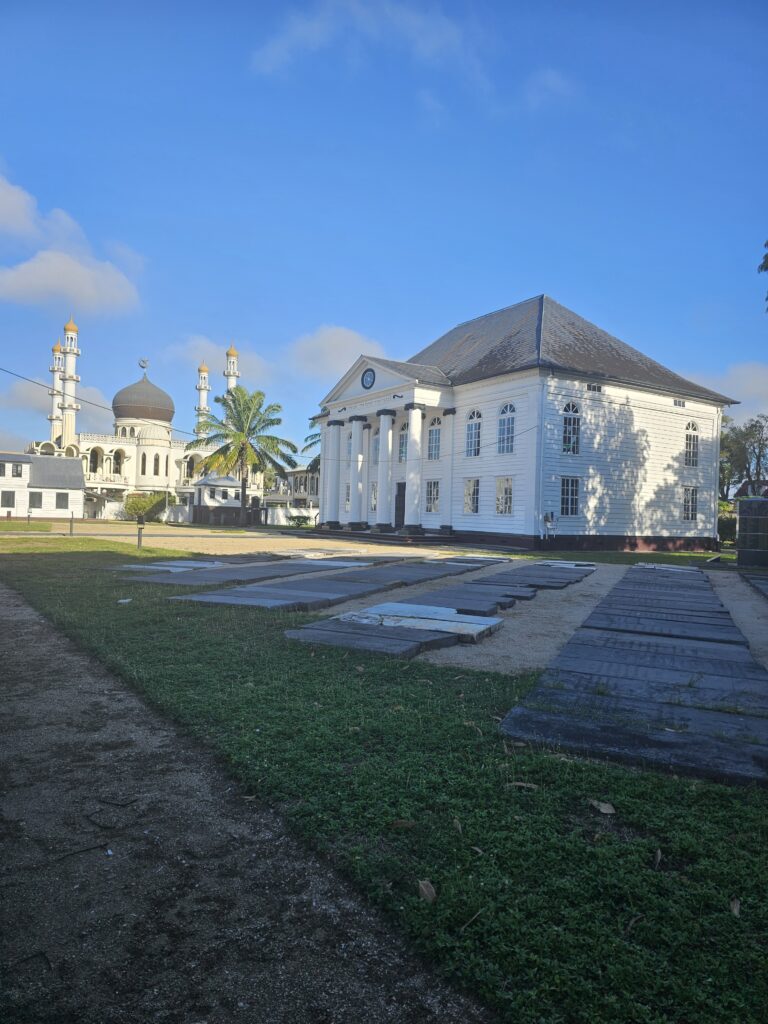
All in all, it didn’t take me long to see all the sights of the city. Like I said, even at a very slow pace, you should be through the program in about two hours. Unless Fort Nieuw Amsterdam is open and you are still going there. However, due to the heat, I wasn’t unhappy that my sightseeing tour was over so quickly.
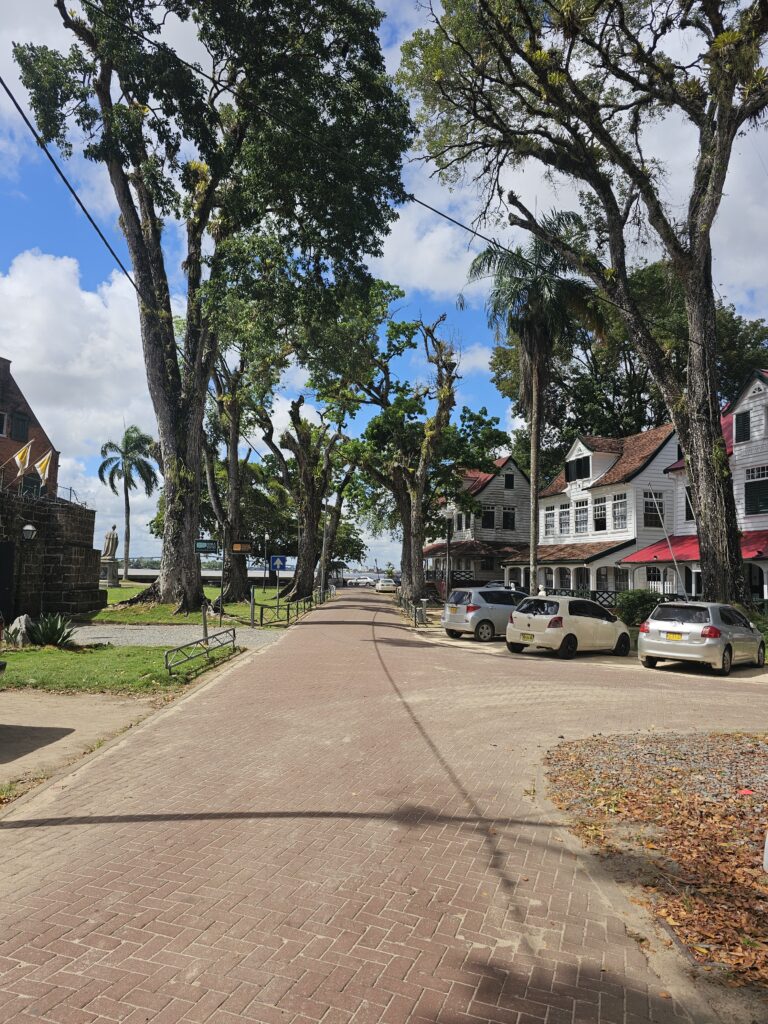
I had something else planned for the late afternoon, namely a three-hour sunset dolphin cruise on the Commewijne River. I booked through Orange Travel, but even here I had the same problem as in Guyana: a week before the tour, I was told that no other participants had registered yet and that the minimum number of people was two. If no-one else signed up by that date, I could book two seats.
Admittedly, as the tour only cost €27.50, it would have been fine for me to pay double. But it was still annoying. Finding any tours here in the Guianas was energy-sapping. Fortunately, I received an email a few days later that the cruise was definitely happening.
I was on the boat with eight other tourists. Six of them from the Netherlands and two French people who lived in French Guiana. Quite different from Guyana, where I didn’t see any tourists at all. Or to be more precise, those on my Kaieteur Falls tour were either aid workers or Guyanese from the United States visiting their homeland.
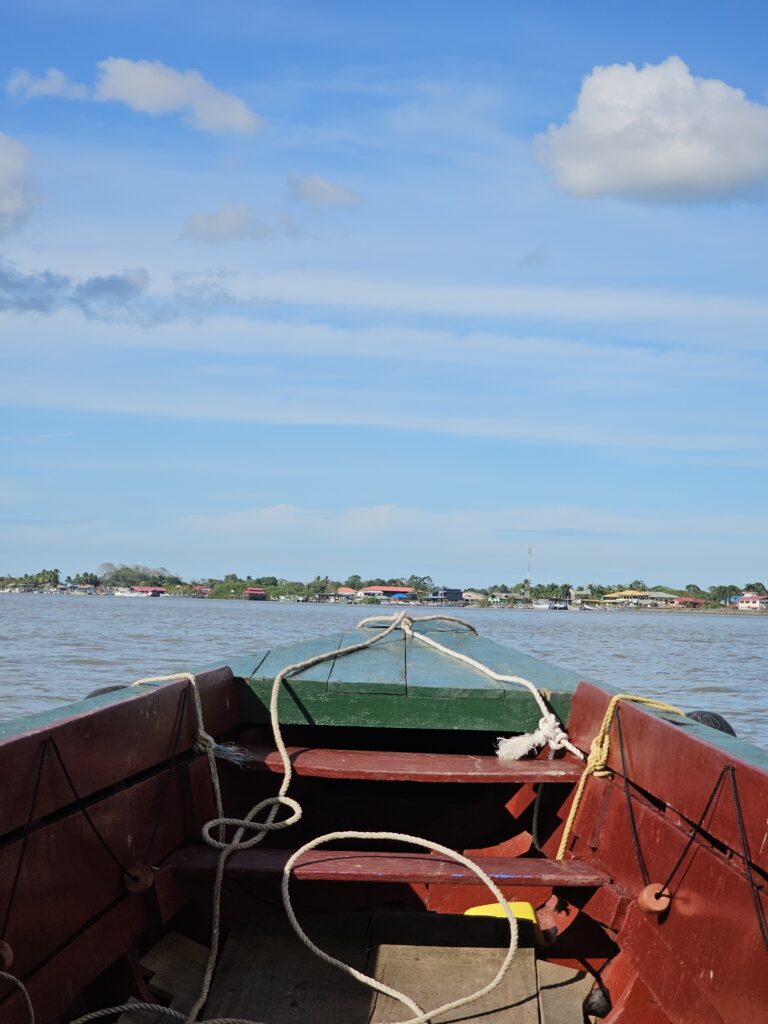
The cruise was then pretty cool and I would say one of my top 3 highlights in the Guianas. We spent about the first two hours on the water, where we saw two pink dolphin families. At first the dolphins were a little hesitant, but as time went on they came closer and closer to our boat.
The Dolphin Cruise is basically like a safari, which means you never know exactly how good the encounter with the animals will be. Sometimes the dolphins are shy, sometimes they behave just like they did with us. So we had luck on our side.
Afterwards, we went on a one-hour village tour and I’m not quite sure what this tour was all about. In the end, we just walked around on land for an hour and chatted a bit with our guide. But it wasn’t as if we had visited anything incredibly exciting. For me, this hour simply had a filler character so that the Dolphin Cruise wasn’t over too quickly.
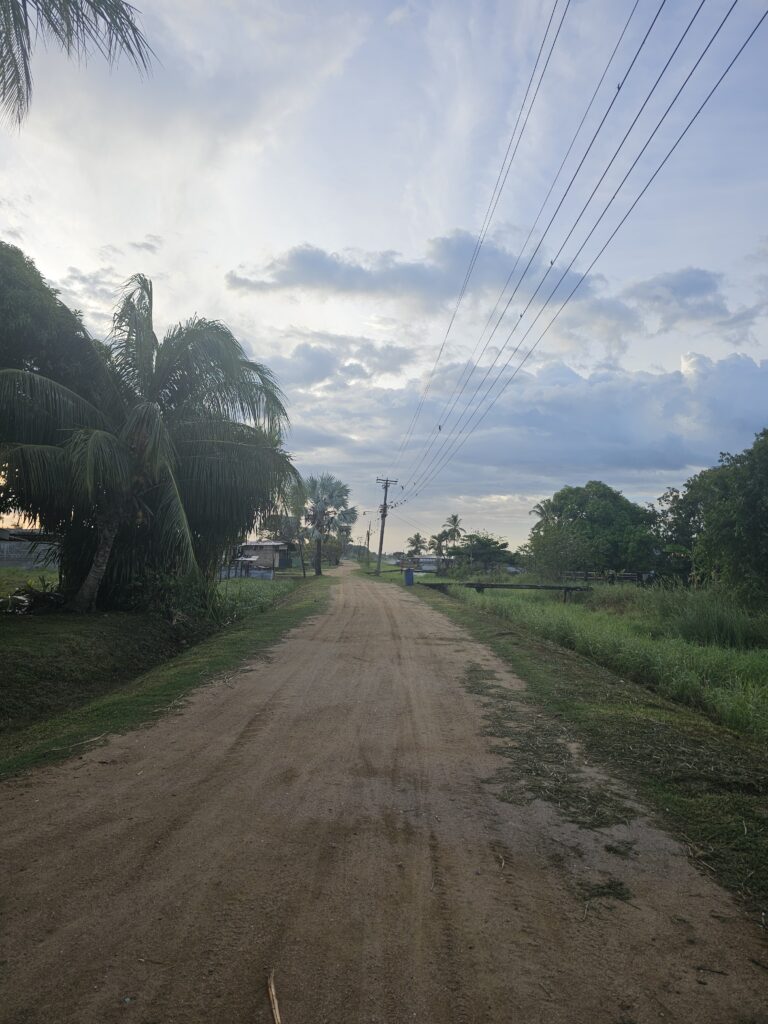
But it was still interesting because I learned a lot about Suriname during the lesson. For example, the guide said that he was Javanese. And I was like: huh? What does Suriname have to do with Java or Indonesia?
The background is the Dutch colonial era. The Dutch settled slaves from Africa, then they brought Indonesians from Java and last but not least they made a deal with the British Empire, which brought them workers from India to Suriname. It’s unbelievable, isn’t it, this colonial era? Imagine, a country forcibly relocates people from countries on different continents to a country on yet another continent?!
Today, however, this results in a very heterogeneous country with people of different origins, different languages and also a variety of culinary influences. Just like in Guyana, I had the feeling that the Indian influence is the strongest in Surinamese cuisine. Roti or chicken masala, for example, are part of the local cuisine.
My time in Suriname was already over after that day. The next morning I continued my trip to French Guiana. This trip was the one about which there is the least information on the internet, so I will explain the process in the French Guiana trip report.
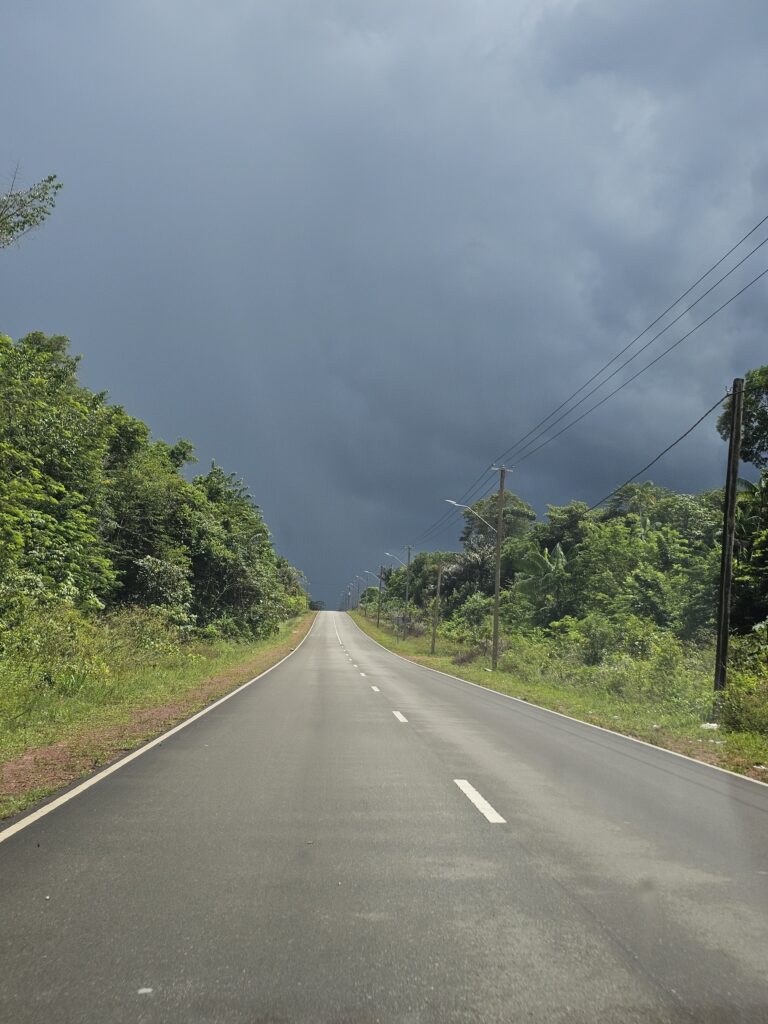
But for the trip from Paramaribo to the border, you can either take the bus (complicated) or one of the many drivers who offer a daily shuttle service there. I did the latter and went with Mr. Baldwin (Whatsapp: +5978855316) for €25. All in all, I can already tell that the border crossing was quite smooth.
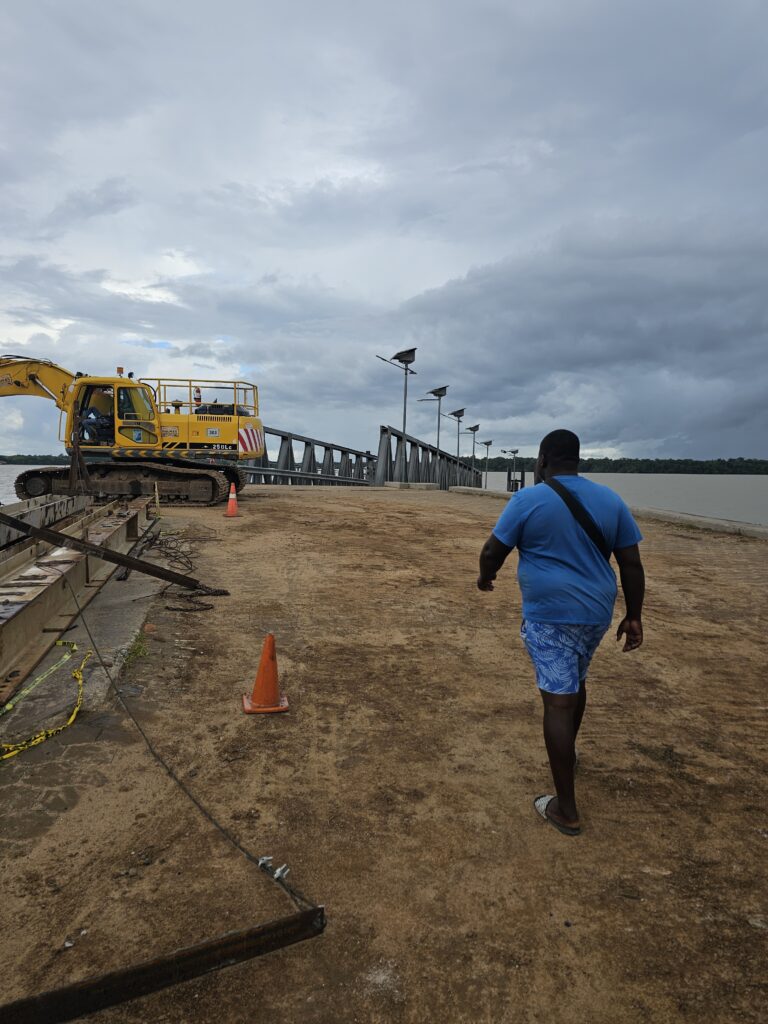
So, what’s the bottom line on Suriname? Of all three Guianas, Suriname was the country I liked the most. I perceived Suriname as a laid-back and peaceful country, quite different from Guyana. The people were friendly and hospitable, and Paramaribo had quite a relaxed vibe.
For me, Suriname would also be the only country in the Guianas that I could imagine visiting a second time. Suriname basically has the same problem as the other Guianas: there is actually a lot on offer for tourists, but the tourism infrastructure is not yet particularly well developed.
For the few tourists who visit Suriname, the interior is certainly the main reason for their trip. After all, most of the country is forest anyway. But you need time for a trip in the interior. With a little more time, I would probably have visited Fredberg. You can get an impression of it on Adam’s blog, it looks quite cool. By the way, I also learned that Suriname is a paradise for those interested in birds.
My journey then took me to French Guiana. Once again a completely different “country” compared to Guyana and Suriname. Trip report follows soon.
Click here to find the trip reports of the 180+ other countries I have visited so far!
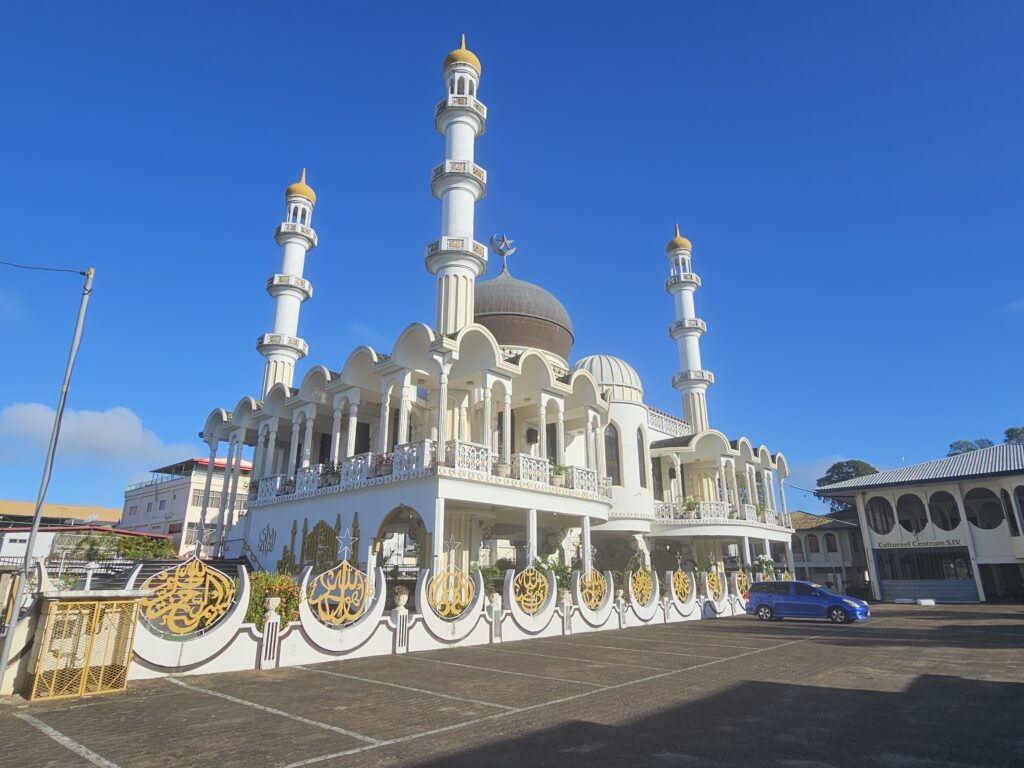
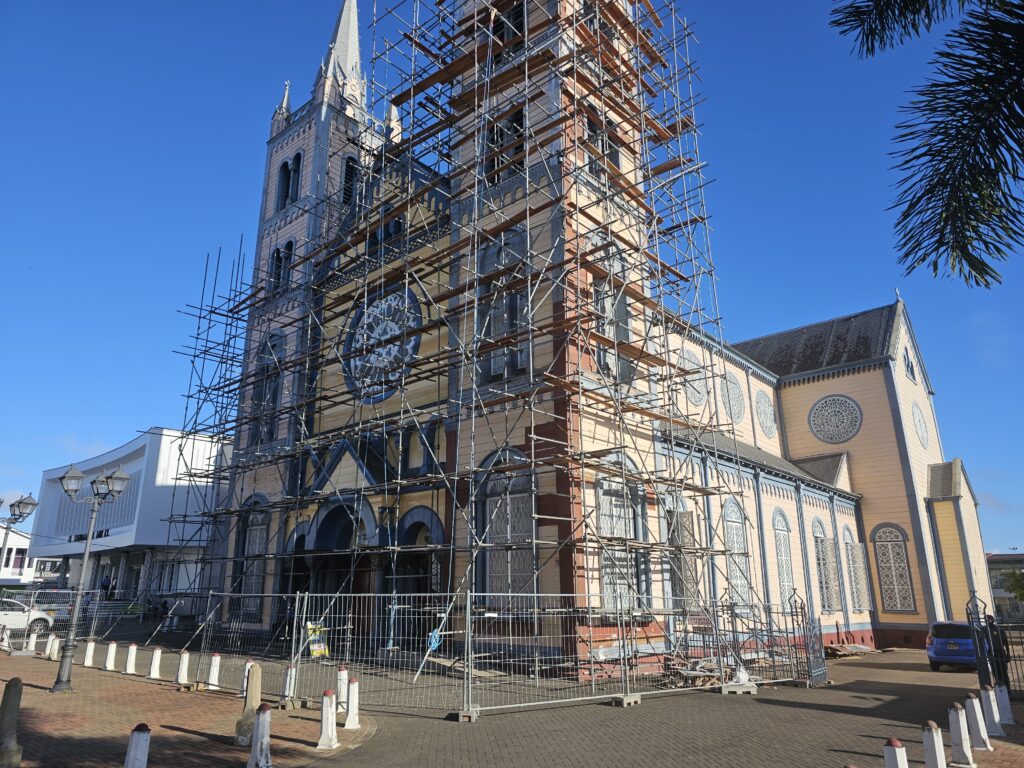
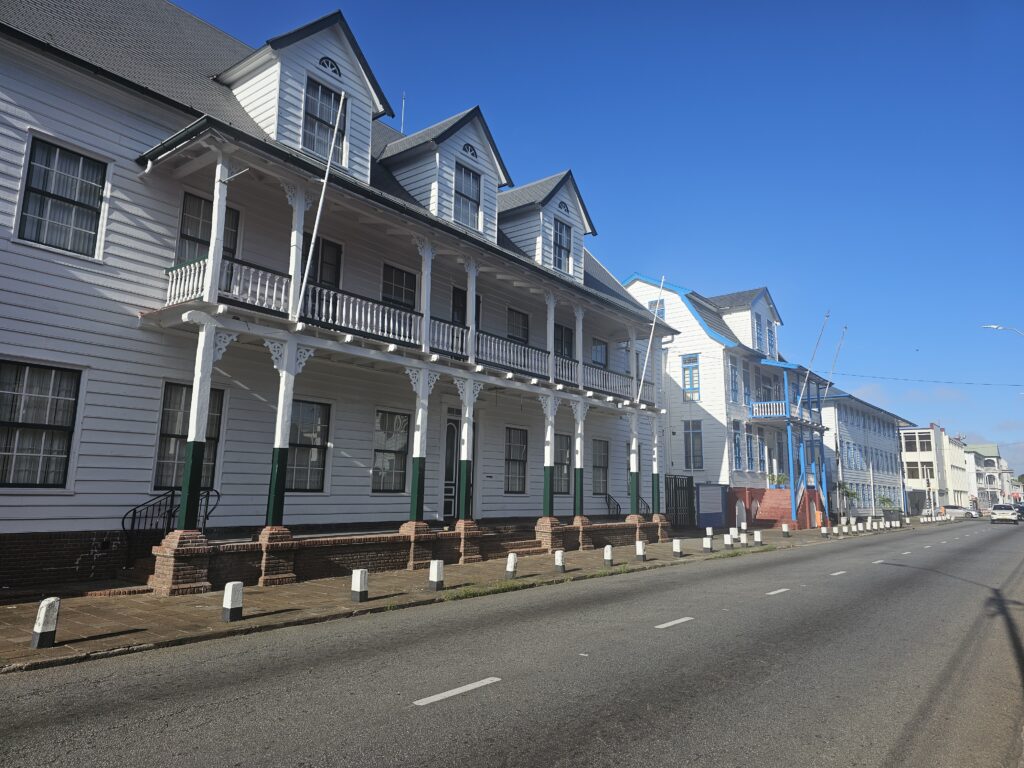
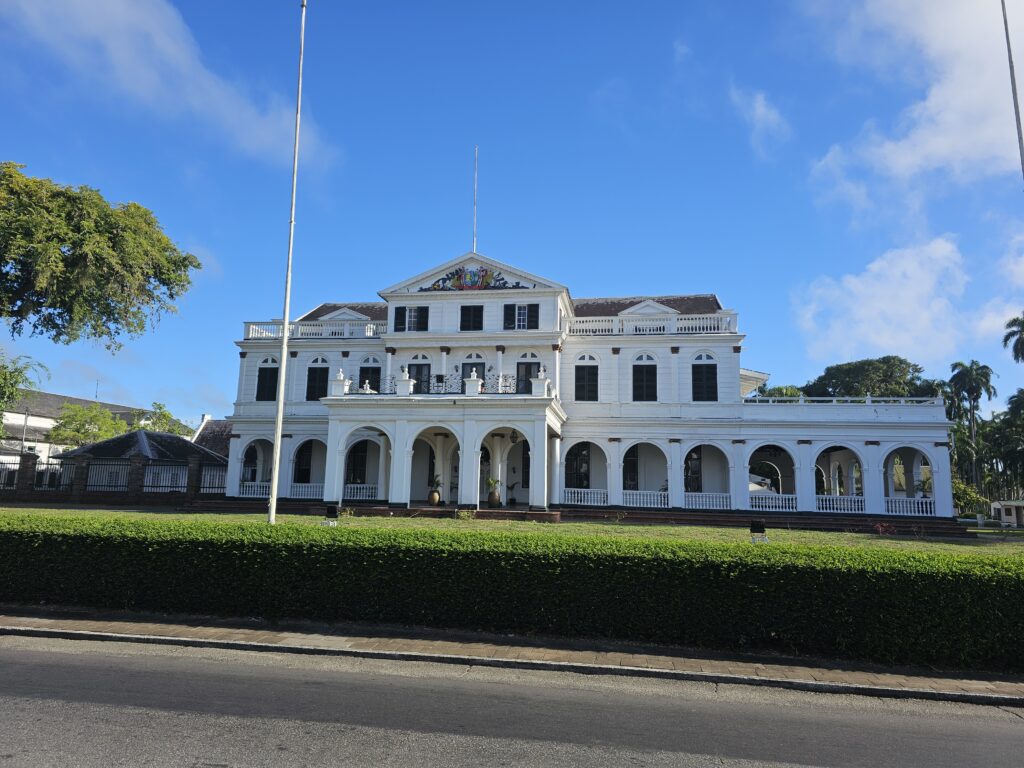
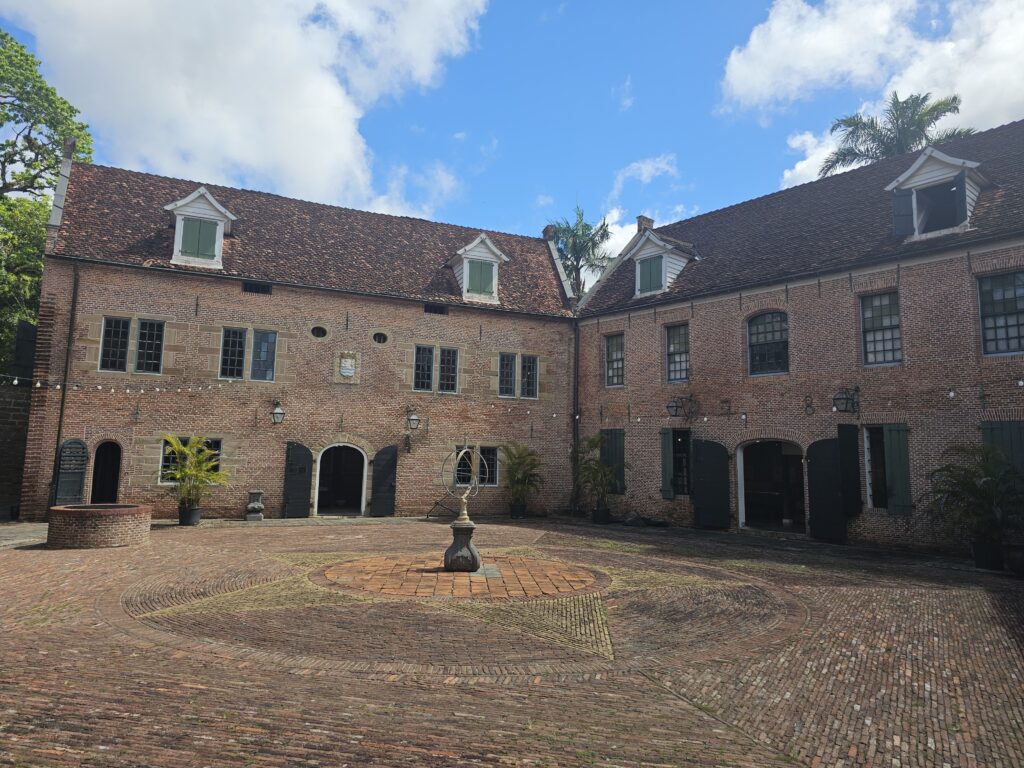
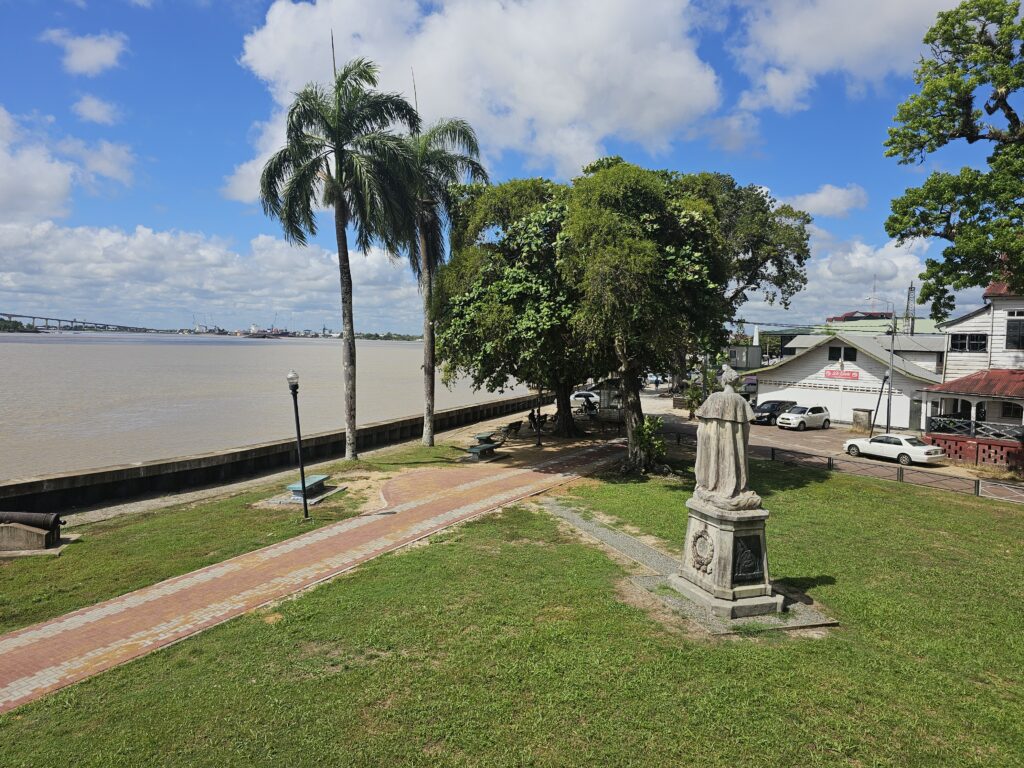
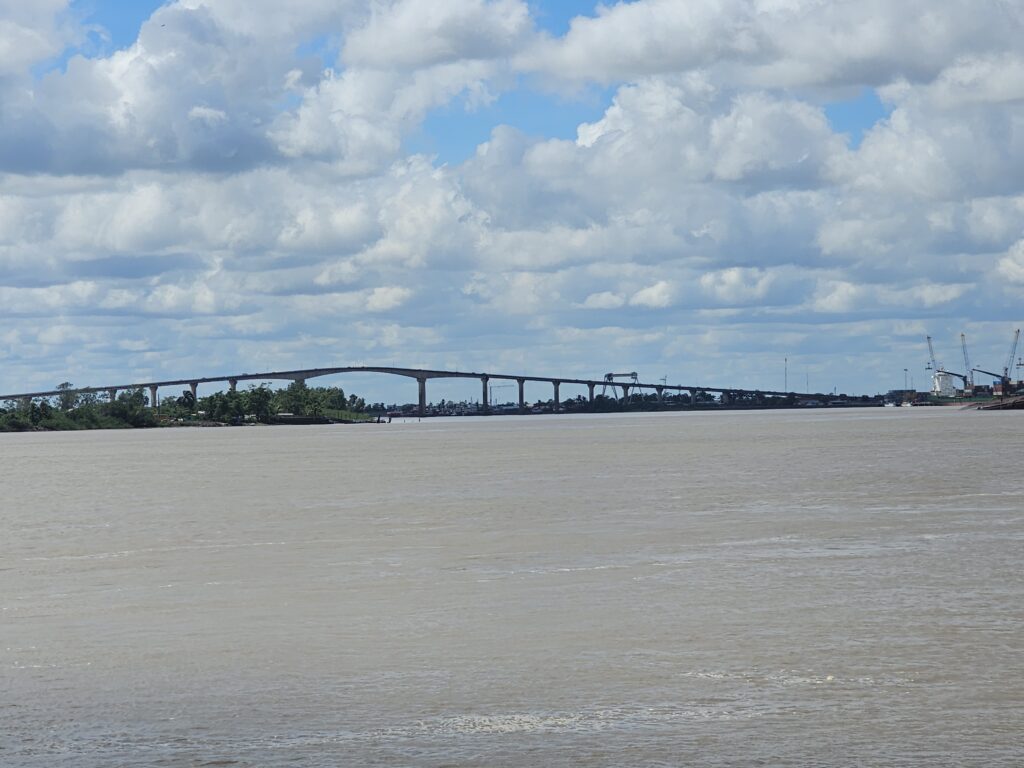
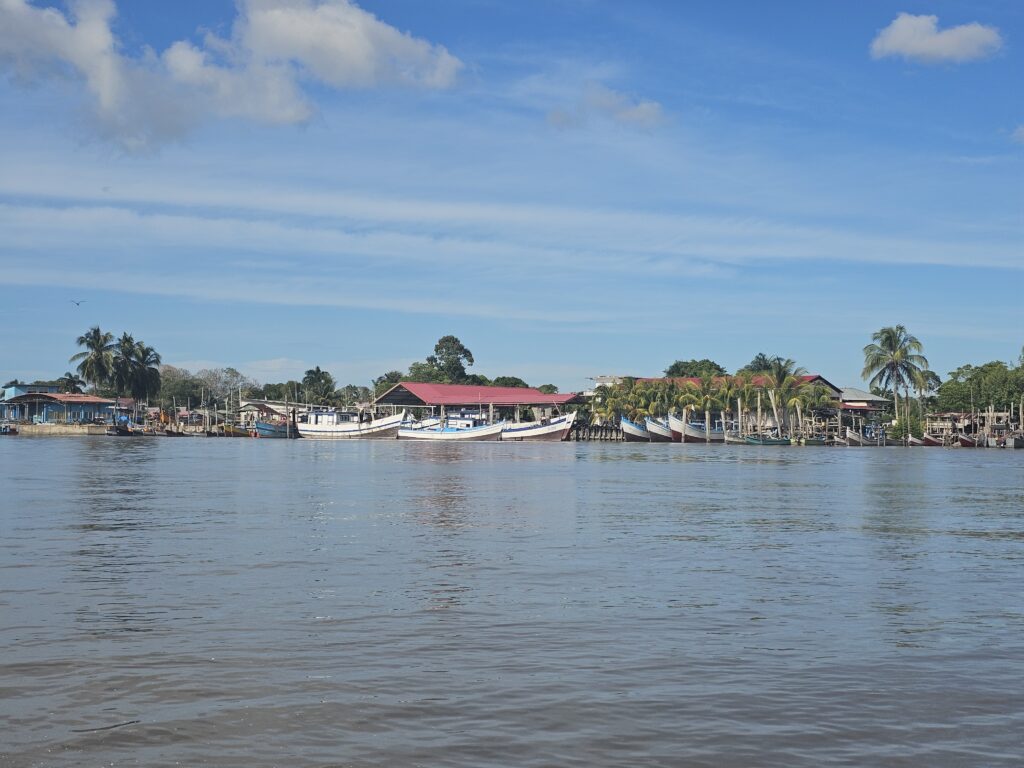
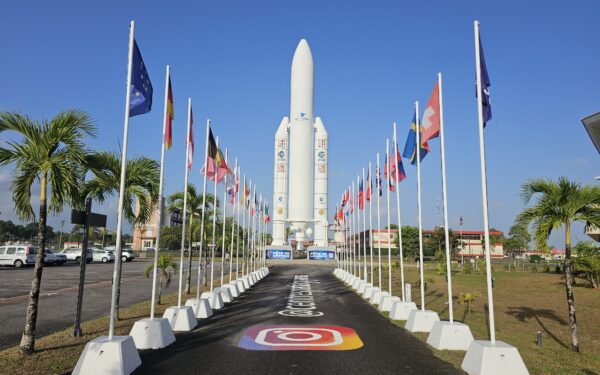
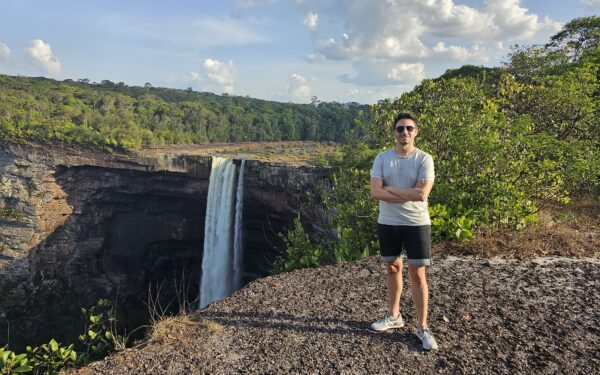
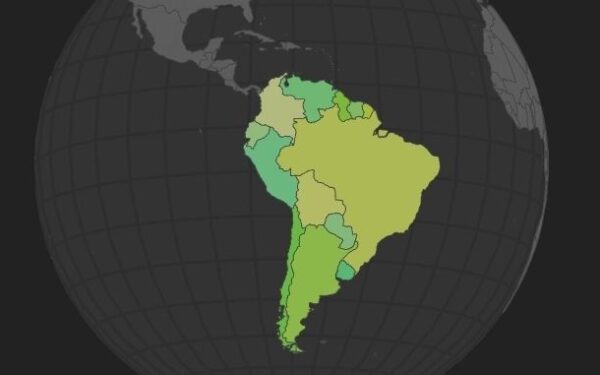
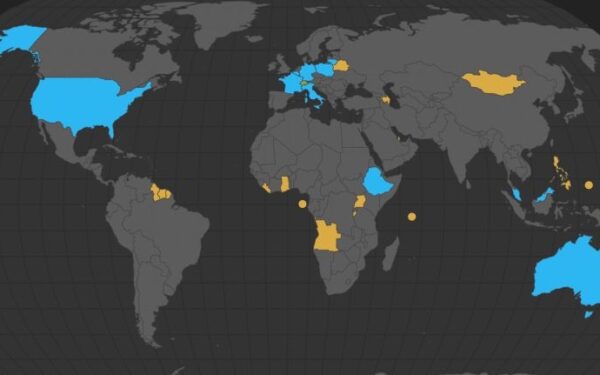
“Suriname doesn’t have a national football team”
They do! They’ve been competing regularly since the early 1960s (withdrew from the 1938 World Cup.) Qualified for the 2021 CONCACAF Gold Cup and were second in their qualifying group to Canada for FIFA World Cup. I think Monaco and Vatican are the only countries which don’t have.
These trip reports are great by the way!
Whaaat? Wow! Didn’t know that they are part of CONCACAF! Thanks for this comment!